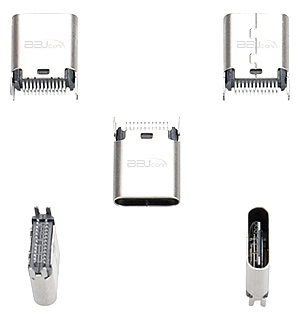Importance and Implementation Analysis of Type-C Female Salt Spray Test
With the popularity of electronic products, USBType-C interfaceAs a new connection standard, it has gradually become the mainstream interface for various devices with its efficient and fast data transmission and charging functions. However, as an external interface, the durability and reliability of the Type-C female socket directly affect the performance of the device. Usage experience and lifespan, among which the salt spray test, as a common environmental reliability test, plays a crucial role. This article will explore the significance of the salt spray test of the Type-C female socket, the implementation method and how to ensure its good performance.
The significance of Type-C female socket salt spray test
As a key component for device connection, the Type-C female socket is exposed to the external environment for a long time and is easily affected by moisture, salt and other factors in the air. Especially in areas with common humid or marine climates, the interface of the Type-C female socket Easily affect data transmission and power supply due to corrosion Supply function, in serious cases may lead to equipment failure. Therefore, the salt spray test of the Type-C female socket is used to simulate long-term exposure to a corrosive environment. By testing its anti-corrosion performance, it is judged whether it can still survive under extreme conditions. Work normally to ensure the stability and durability of the equipment.
Test standards for Type-C female socket salt spray test
When conducting salt spray testing of Type-C female sockets, it needs to be carried out in accordance with relevant international standards. Common test standards include IEC 60068-2-11, MIL-STD-810, etc. These standards define the temperature and humidity of the salt spray test. , salt spray concentration and other requirements to ensure the scientificity and accuracy of the test. Usually, the salt spray test is conducted in a closed environment, simulating the marine climate or industrial environment by exposing the test sample to the air containing salt spray. corrosive atmosphere.

The test process generally includes salt spray exposure lasting 48 hours to 500 hours. During this period, the appearance and performance changes of the Type-C female socket need to be regularly checked, including corrosion of contact points, changes in electrical performance, etc. Through these indicators, engineers can evaluate The corrosion resistance and long-term reliability of the Type-C female socket ensure that it meets the requirements of product use.
Implementation steps of Type-C female socket salt spray test
When implementing the Type-C female socket salt spray test, careful preparation and operation are required. First, ensure that the salt water ratio of the test equipment meets the standard, usually the salt water concentration is 5 percent (mass ratio). Secondly, ensure that the salt spray box The temperature control and humidity control system works normally, the temperature and humidity are usually controlled at around 35 degrees Celsius, and the salt spray concentration should be evenly distributed.
Type-C receptacle samples should be placed in the test equipment to ensure that all contact points are exposed to the salt spray environment. During the test process, regularly observe the appearance of the sample for corrosion, oxidation or other damage, especially on the connection ports and pins Contour contact area. In addition, the impact of salt spray exposure on its functionality is evaluated by testing electrical properties (such as contact resistance, signal transmission capability, etc.).
Common problems and solutions for salt spray testing of Type-C female sockets
When performing salt spray testing on Type-C female sockets, you may encounter some challenges and problems. For example, the metal surface of the sample may be corroded due to long-term exposure to salt spray, resulting in poor contact. At this time, you can optimize Surface treatment process of Type-C female socket, such as nickel plating, gold plating or anti-corrosion coating, to enhance its corrosion resistance.
In addition, the salt spray test is not the only evaluation standard. Although the salt spray test can effectively simulate the corrosion situation in a humid environment, it cannot completely cover all possible environmental factors. Combined with other environmental tests, such as high and low temperature cycle tests, humidity tests etc., which can more comprehensively verify the reliability of the Type-C female socket.
Optimization and application prospects of Type-C female socket
As the demand for interfaces in smart devices and consumer electronics products continues to increase, the design and testing of Type-C receptacles are becoming increasingly refined. In order to improve the corrosion resistance of Type-C receptacles, engineers continue to explore new materials and coatings. Layer technology, while enhancing the sealing and durability of interface components. Through a series of reliability tests such as salt spray testing, the long-term stability of the Type-C female socket in different environments can be ensured and the consumer experience can be improved.
To sum up, the salt spray test of Type-C socket is not only an important guarantee of product reliability, but also a key link for enterprises to ensure product quality and improve market competitiveness. With the advancement of electronic technology and increasingly stringent environmental requirements, Salt spray testing of Type-C female sockets will continue to play an irreplaceable role in product development and quality control.
